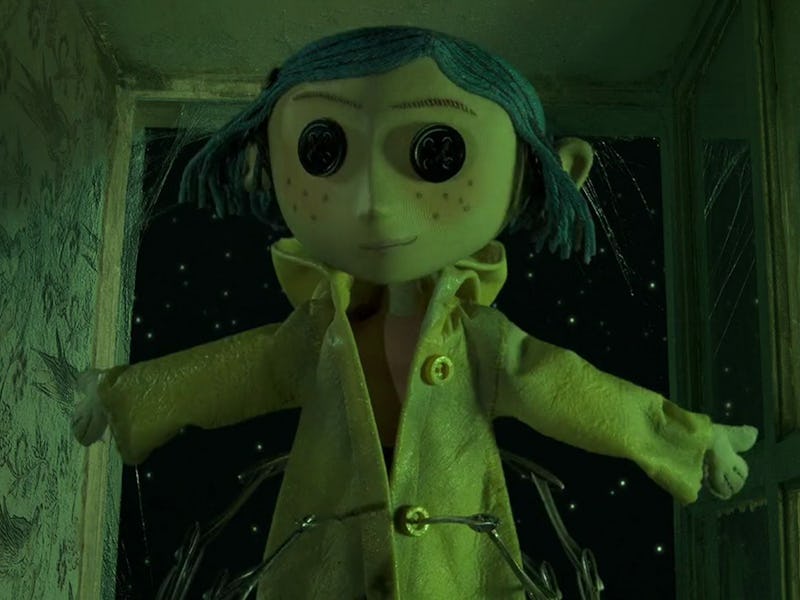Stop-Motion Is Creepy Because It's Essentially Zombification
Stop-motion began by bringing the dead back to life.

Stop-motion is a form of reanimation where physical objects gain lifelike movements. It’s why films like Kubo and the Two Strings from Laika feel so different from Pixar fare. This same quality is also why stop-motion’s been used for so many horror projects.
In the early 20th century, Polish filmmaker Ladislas Starevich was quickly developing a reputation as an experimental filmmaker. For his fifth project, Starevich wanted to film two stag beetles fighting one another. The problem was the beetles would quickly die under the intense heat of stage lighting. Starevich’s solution? Keep the dead beetle bodies, replace their legs with wires, and turn the corpses into puppets Starevich could manually re-create the action with. The result was Lucanus Cervus, the first animated puppet film.
Starevich moved to Moscow in 1911 but continued to make films featuring animal and insect corpses as puppets for his stop-motion films. The most famous of these, Revenge of the Kinematograph Cameraman, told the story of anthropomorphic insects caught in the throes of infidelity and revenge. It’s both captivating and terrifying.
In the case of Starevich’s, stop-motion is practically bringing these insect and animal corpses back to life, maybe even more so as they gain additional, humanlike functions. While there haven’t been any recent films that utilize animal corpses as physical play models to star in films, the idea that physical objects gain the illusion of movement through this animation technique is a magic just short of animatronics.
Watching Cameraman’s Revenge and knowing these bugs were once live beings before becoming zombie puppets is just the right kind of macabre origins for an animation technique favored by horror filmmakers. While Laika makes family-friendly animated films, the studio has produced two of the biggest, mainstream stop-motion horror films with Coraline and Paranorman. In addition, the studio was contracted to work on another family-friendly horror project, this time from Tim Burton, the animated film, Corpse Bride.
Alice (1988)
For more hardcore stop-motion offerings, plenty of independent filmmakers have utilized the technique to produce chilling and downright terrifying film projects. Short films like Harrison Browning’s Pluto and the Vessel, Christop Younes’ One of Two Evils, and Sam Barnett’s Operator. These films are decidedly more serious about being a pure horror experience than Laika’s dark fantasy films.
Additionally, there’s also Alice, a Czech adaptation directed by Jan Švankmajer. This take on Lewis Carroll’s literary classic combines live-action sequences with stop-motion animation, featuring a live actress playing Alice encountering disturbing stop-motion puppet denizens of Wonderland. The result is yet another horrifying entry into the stop-motion canon.
While there are plenty of lighthearted stop-motion films like Wallace and Gromit, stop-motion clearly has an appeal for the horror crowd.
Much has been written about stop-motion’s place along the uncanny valley, an in vogue term, especially as our real-life society is producing increasingly realistic robots. But, the effect stop-motion has on viewers is undeniably a result of stop-motion film’s place in the valley. While the puppets and models used in many of these stop-motion pictures aren’t so realistic as to cause discomfort to the viewers, seeing physical objects come to life is jarring. That discombobulating effect probably factors into the technique’s horror factor with audiences who are unnerved by the near-life quality of the puppets.
Puppets have traditionally been used to simulate life. That simulation occurs in theater, where puppets are perhaps most commonly used today, or even in certain religious practices like the Indonesian TauTau Puppets, where they literally represent the deceased. Stop-motion is simply an evolution to puppetry, eliminating the presence of the puppeteer. Unfortunately, that also makes the puppet appear autonomous, maybe even haunted. We all know that haunted puppets are one of the scariest things ever.
So just as Starevich brought dead insects to life, there’s a quality to stop-motion animation that feels far more magical than CGI. There, adult audiences understand the role of artists and computers in generating images to create a film. Stop-motion is a cinematic magic trick that might have done too good a job at hiding the illusionists, thereby giving filmmakers a chance to deliver some ingeniously crafted, and sometimes very terrifying, movie experiences.